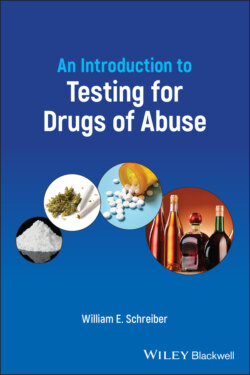Читать книгу An Introduction to Testing for Drugs of Abuse - William E. Schreiber - Страница 9
Preface
ОглавлениеToxicology is one of the most complex fields in laboratory medicine, and it is a frequent source of consultations. Doctors, nurses, patients, and other clients ask me a lot of questions about drug testing and what the results mean. Here are some examples.
Can passive exposure to marijuana smoke cause a positive test for cannabis?
Which drugs are detected by your amphetamine assay?
If my patient is taking oxycodone, why was the screening test for opiates negative?
How long can heroin be detected in a urine sample?
Could this level of cocaine in blood be fatal?
It has taken years to learn the answers and, perhaps more importantly, to locate the resources where those answers can be found. There is a huge literature on drugs of abuse and their measurement. However, it is hard to find a publication that summarizes both the testing process and the interpretation of test results. That is what laboratory and clinical practitioners need, and that is the subject of this book.
My goal is to provide a readable account of the most common drugs of abuse – what they are, how they work, therapeutic uses, potential for abuse, and how laboratories test for them. Enough practical information is included so that readers can understand and interpret the results of drug tests. The book is an introduction, not a compendium – more detailed information is available in textbooks, journal articles, and websites, some of which are listed at the end of each chapter.
Case studies are included with all of the chapters on drugs to add interest and bring the subject to life. Some of the cases describe real people and events, while others are the product of my imagination, often based on personal experiences or stories related by colleagues. Whether real or fictional, every case poses questions to the reader, discusses the answers to those questions, and ends with several key points about drug use and the role of testing. The cases include material that is not covered elsewhere – don't skip them!
This book was conceived and written with three audiences in mind. The first group includes pathologists, clinical laboratory scientists, and medical technologists. They are the professionals who perform drug testing, report the results, and provide consultation on what those results mean. A second group consists of physicians, nurses, pharmacists, and other healthcare providers who use test results in making decisions about patient management. The third audience is composed of trainees – residents in pathology and primary care specialties as well as students in medicine, pharmacy, nursing, and other health‐related programs.
I would like to acknowledge the contributions of others who have helped in the creation of this work. Dr Maria Issa and Dr Serguei Likhodi read portions of the manuscript and offered helpful feedback and suggestions. Kate Campbell produced most of the illustrations in the first section of the book, many of which describe the testing process. Finally, I salute the scientific and technical staff in the clinical laboratories of Vancouver General Hospital, the British Columbia Provincial Toxicology Centre, and LifeLabs. They have been my work colleagues for more than three decades and have taught me much of what I know about this field.
William E. Schreiber June 23, 2021
